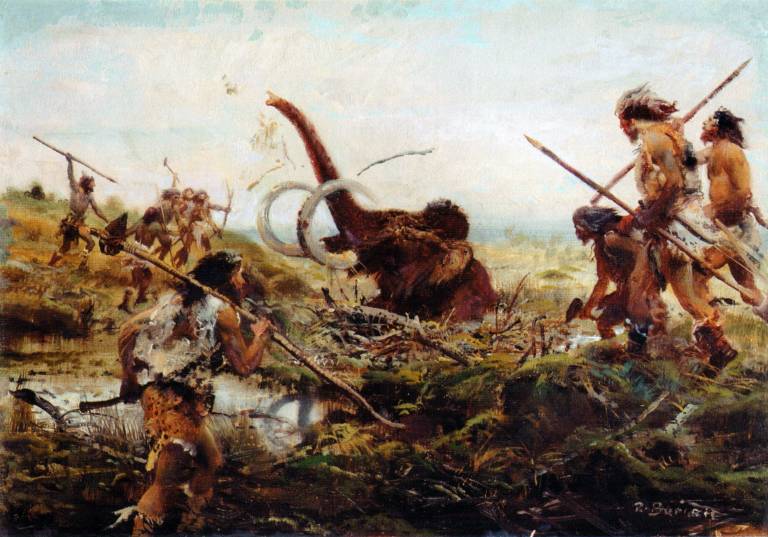Highly muscular Homo neanderthalensis was adapted more for hunting than the harsh tundra environment of the Late Pleistocene
31 January 2019
The prevailing explanation for Neanderthal body form is the cold (glacial) adaptation hypothesis.
 However, palaeoecological associations appear to indicate a less cold woodland environment. Under such conditions, encounter and ambush (rather than pursuit) hunting - and thus muscular power and sprint (rather than endurance) capacity - would have been favoured. We hypothesise that the highly muscular Neanderthal body form reflects an adaptation to hunting conditions rather than cold, and here both review the palaeoecological evidence that they inhabited a mainly woodland environment, and present preliminary genetic analyses in support of this new hypothesis. Among the team members is Professor Mark Thomas (UCL Genetics, Evolution & Environment).
However, palaeoecological associations appear to indicate a less cold woodland environment. Under such conditions, encounter and ambush (rather than pursuit) hunting - and thus muscular power and sprint (rather than endurance) capacity - would have been favoured. We hypothesise that the highly muscular Neanderthal body form reflects an adaptation to hunting conditions rather than cold, and here both review the palaeoecological evidence that they inhabited a mainly woodland environment, and present preliminary genetic analyses in support of this new hypothesis. Among the team members is Professor Mark Thomas (UCL Genetics, Evolution & Environment).
Palaeoecological and genetic evidence for Neanderthal power locomotion as an adaptation to a woodland environment
J. R. Stewart, O. García-Rodríguez, M. V. Knul, L. Sewell, H. Montgomery, M. G. Thomas, Y. Diekmann
DOI: 10.1016/j.quascirev.2018.12.023
____________________________________________________________________________
Check out articles discuss this new research:
Neanderthals: More Usain Bolt than Mo Farah, say scientists
Irish Examiner (Web), 29/01/2019, Unattributed
Fast movers: Neanderthals were sprinters not joggers
The Herald, 30/01/2019, p.8, John Von Radowitz
Neanderthals may have been sprinters not endurance runners
New Scientist (Web), 29/01/2019, Unattributed
Neanderthals: More Usain Bolt than Mo Farah, say scientists
Evening Express (Web), 29/01/2019, Unattributed
Neanderthals: More Usain Bolt than Mo Farah, say scientists
BT.com (Web), 29/01/2019, Unattributed
 Close
Close

